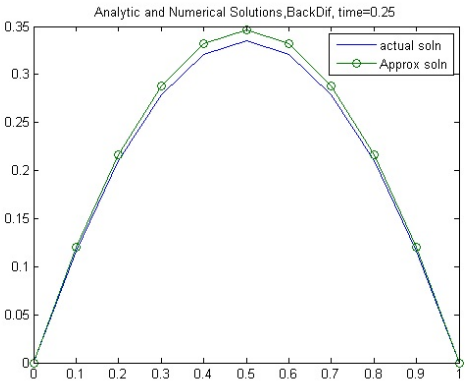Fractal Formation
The video below is a snapshot of the fractal at the top of this page as it stabilizes into its final form.
Joint Math Meeting 2014 Poster
The following is the poster I worked on under the guidance of Professor Sindi at UC Merced. I presented it at the Joint Mathematics Meeting 2014 and presented it at UC Merced's Research Week where I won 1st place. The topic is a model of proteins proliferating inside a cell, but you can read more about it by clicking on the picture to download my poster. I also collaborated on related topics with my peers and graduate students at SIAM Computational Science & Engineering 2015.

Numerical Solution: Finite differences of 1D Heat Equation
I coded finite difference solvers for parabolic Partial Differential Equations (PDEs). Parabolic PDEs have the form

The first type of finite difference method is the forward difference (FWD); although, FWD is unstable for parabolic PDEs due to its strict requirement on the constant alpha, and the space and time step sizes h, k.

To overcome the stability issue we can use a variant of finite differences called backward difference (BWD). The two methods contrast in the following ways: FWD uses the current time step to estimate the next time step. BWD uses the previous time step to estimate the current time step. As a result the stability of BWD does not depend on the constant alpha and the step sizes. However the method only has local truncation error O(k+h^2). To reach a higher accuracy of order O(k^2+h^2) we can average the FWD and BWD solutions - this is called the Crank-Nicolson Method (CRN). Below are results comparing the BWD to the CRN for a specific case with Dirichlet boundary conditions and given Initial Condition. It is obvious that the CRN provides a more accurate approximation than the FWD and the BWD alone.


References
1. Numerical Analysis by Burden and Faires 9th ed.




